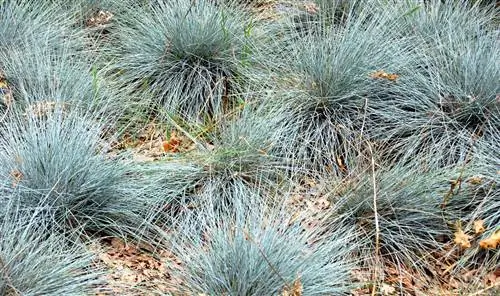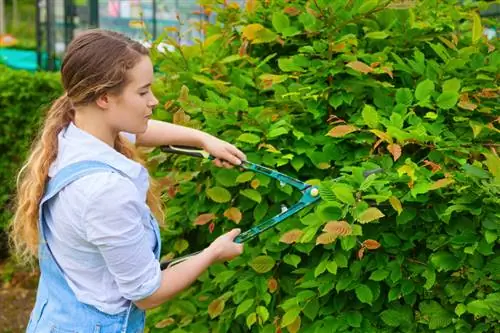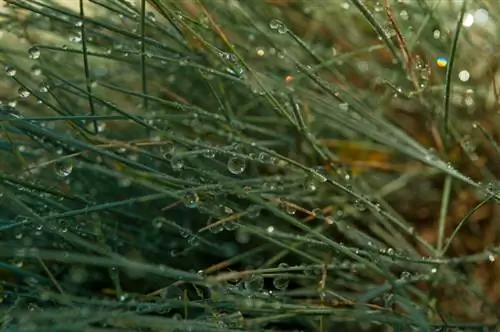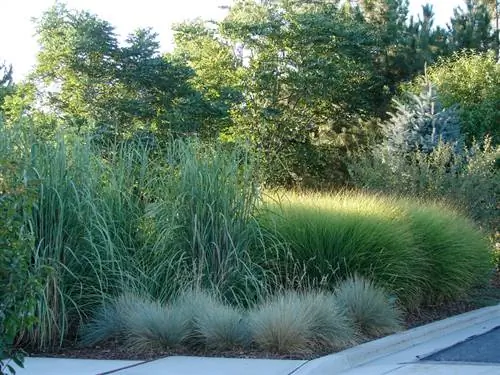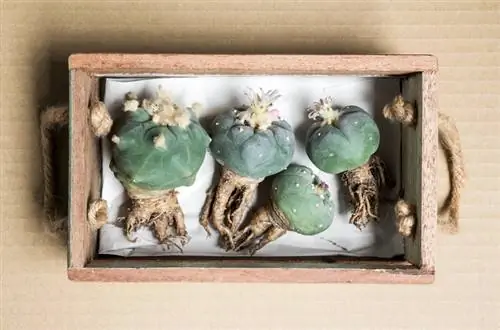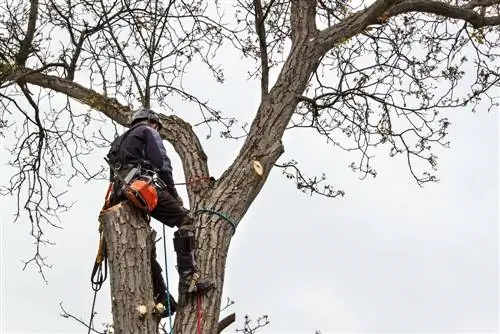- Author admin [email protected].
- Public 2023-12-16 16:46.
- Last modified 2025-01-23 11:20.
Blue fescue (Festuca glauca) is an ornamental grass with striking blue to blue-gray colored stalks. However, it is cultivated not only because of its distinctive color, but also because of its dense, clump-like growth. Blue fescue grass is also very robust and is considered extremely easy to care for - provided it is in a suitable location. The experts disagree about whether the ornamental grass should be cut back or not.
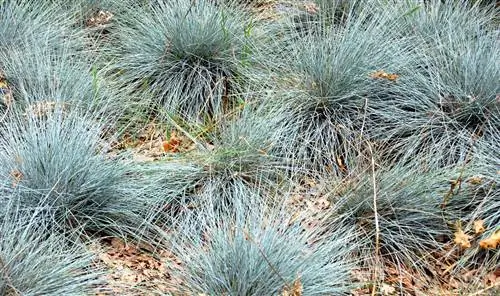
Do you have to cut back blue fescue?
Should you cut back blue fescue? Basically, pruning is not necessary and can even be harmful. If the grass has yellow stalks or is flattened, you can carefully comb it out or carefully pluck it out individually. A radical pruning only makes sense in spring if there is a fungal infection.
Cutting back basically not necessary
First of all: Even if your garden center has recommended annual pruning, this is actually unnecessary and, in some cases, even fatal. Many a gardener has already had the experience that the blue fescue that was cut back did not sprout again. However, this has nothing to do with the fact that the plant is fundamentally intolerant of cutting, but rather with an unsuitable location. If the blue fescue does not feel comfortable in one place, new growth may simply not occur - or the plant, which is actually hardy, freezes back in the cold season. If you want to be on the safe side, it's better not to trim your blue fescue clumps.
What to do if the blue fescue grass is dead?
But what should you do if the blue fescue grass is full of yellow stalks after a long winter or is lying flattened thanks to your own or the neighbor's cats? In this case, you can either cut back vigorously or simply comb out the clumps vigorously with your hands. You can carefully pluck out yellow stalks individually and simply leave the rest. By the way, a few sticks stuck in the nest (€14.00 on Amazon) help against cats, as they make the nest no longer seem quite so cozy.
Radical pruning only in spring
If pruning is still necessary - for example because the plant is infected with fungi - you should carry out this measure on a warm day in spring if possible. However, if the blue fescue is cut back in the fall, you will further weaken the plant. By the way, mowing (e.g. with a lawnmower) is also not advisable, even if you have planted a larger area with blue fescue grass as a lawn replacement.
Tip
If the blue fescue grass feels very comfortable in one location, it tends to self-sow. To prevent this, you should remove the flowers that appear in June / July after they have faded.

